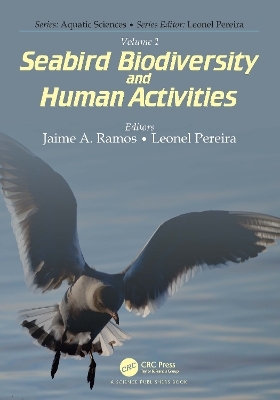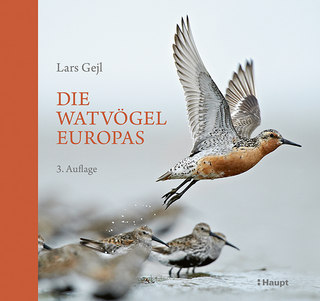
Volume 1: Seabird Biodiversity and Human Activities
CRC Press (Verlag)
978-0-367-49827-6 (ISBN)
This book provides a modern overview on seabird biodiversity studies: it begins by covering the most up-to-date techniques to study seabirds, and then focus on pragmatic issues related with interactions between seabirds and humans, the use of seabirds as ecological indicators and conservation of seabirds. It gives an updated insight on all these topics and highlights gaps that need further development for a comprehensive understanding of the relationships between seabirds and human actions.
This book covers the response of the seabird research community to a biodiversity crisis aiming to contribute towards environmental sustainability. It should provide inspiration to a wide range of professionals and students, including the much needed world-wide collaboration between research groups and practitioners. In this way seabird research and conservation provide an inspiration for the solution of global issues such as climate change.
Jaime A. Ramos is Associate Professor at Coimbra University, Portugal, where he teaches Conservation Biology and Ecology, and is a member of MARE, the Marine and Environmental Sciences Centre. He has worked with seabirds for over 25 years in the Atlantic and Indian Oceans and published over 200 papers in international journals. He leads a team of researchers and students using Conservation Physiology, Diet, Habitat Selection, and Movement Ecology to study the ecology of marine top predators for biodiversity conservation and environmental management. Leonel Pereira, the coordinator of the Aquatic Sciences Series to which this volume belongs to, has a PhD in Biology by the University of Coimbra, Portugal, where he currently lectures. He is also an Investigator integrated in MARE, the Marine and Environmental Sciences Centre. His interests are mainly focused on Marine Biodiversity, Marine Biotechnology and Marine Ecology (environmental assessment). He has authored/edited more than 40 books and book chapters, and published more than 100 scientific papers in international journals.
Part A: Techniques to Study Seabirds 1. An Introduction to Seabirds and Their Study 2. Conventional and Modern Approaches to Study Seabird Trophic Ecology and Diet 3. A Physiological Toolbox to Explore the Relationships Between Seabirds and Their Changing Environments 4. Tracking Seabirds for Conservation and Marine Spatial Planning Part B: Seabirds Interacting with Human Activities and Infrastructures 1. Seabird and Fisheries Interactions 2. Urban Gulls Living with Humans 3. Seabirds and Marine Renewable Energy Sources 4. Seabirds and Biotoxins Part C: Seabirds as Ecological Indicators 1. Seabirds as Indicators of Forage Fish Stocks 2. Seabirds as Indicators of Oceanographic Changes 3. Seabirds as Indicators of Metal and Plastic Pollution 4. Antarctic Seabirds as Indicators of Climate Change Part D: Actions for Seabird Conservation 1. Light Pollution as a Seabirds’ Conservation Threat 2. Eradication and Control of Invasive Mammal Species as a Seabird Conservation Tool 3. Identifying and Establishing Marine Protected Areas Worldwide: The Contribution of Seabird Data
| Erscheinungsdatum | 13.06.2022 |
|---|---|
| Reihe/Serie | Aquatic Sciences |
| Zusatzinfo | 8 Tables, black and white; 1 Line drawings, color; 12 Line drawings, black and white; 5 Halftones, color; 18 Halftones, black and white; 6 Illustrations, color; 30 Illustrations, black and white |
| Verlagsort | London |
| Sprache | englisch |
| Maße | 178 x 254 mm |
| Gewicht | 748 g |
| Themenwelt | Sachbuch/Ratgeber ► Natur / Technik ► Naturführer |
| Naturwissenschaften ► Biologie ► Botanik | |
| Naturwissenschaften ► Biologie ► Ökologie / Naturschutz | |
| Weitere Fachgebiete ► Land- / Forstwirtschaft / Fischerei | |
| ISBN-10 | 0-367-49827-8 / 0367498278 |
| ISBN-13 | 978-0-367-49827-6 / 9780367498276 |
| Zustand | Neuware |
| Informationen gemäß Produktsicherheitsverordnung (GPSR) | |
| Haben Sie eine Frage zum Produkt? |
aus dem Bereich


